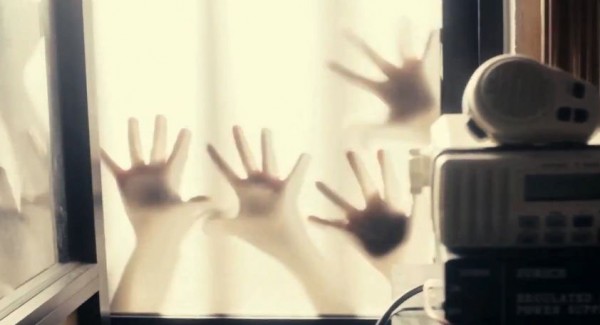
The key question I kept going back to while watching the mysterious Makinov’s remake of Narciso Ibáñez Serrador’s 1976 film WHO CAN KILL A CHILD? was “Why?”. Why does this exist? Why is it basically a shot-for-shot retelling of that earlier film? And why does it still manage to have so much less impact?

It remains a great concept. A tourist couple arrive on a remote island to discover that all of the adults have seemingly disappeared. They catch glimpses of children wandering the streets or sitting in windows, but the buildings are all entirely abandoned. The shock discovery is that the children have – for some unknown, and possibly supernatural, reason – murdered all of the adults, and the “plague” is spreading. A terrific metaphor for the clash between young and old (the original film was released in the wake of Vietnam), innocence and corruption, and something that could easily be twisted to comment more directly on the similar gap that exists in 2012 (with a little xenophobia thrown in for good measure).
Instead, the film follows the formula of the original nearly beat-for-beat, only moving the setting from Spain to Mexico. The set-up remains chilling, and the scenery is beautiful. Makinov’s choice to shoot in a hand-held, improvisational style makes for a growing sense of dread as leads Beth (Vinessa Shaw) and Francis (Ebon Moss-Bachrach) slowly discover the severity of the situation. There’s plenty of tension in these early scenes, but it will be few audience members who are not already aware of the film’s subject matter, so it soon becomes interminable as realization dawns on the adults. There are a few shocking moments, but when the intensity should be at its highest, the film still feels like it’s just getting started. It’s only in the final twenty minutes that things become appropriately unhinged, but even then it’s more numbing than shocking.

It doesn’t help that our two leads are as bland as soda-water, with Ebon Moss-Bachrach hitting some spectacularly wrong notes – particular in one scene of grief that had the audience chuckling. The children do provide an appropriately menacing presence, but scenes of them frolicking with body parts and playing in entrails end up being more silly than scary, and there are few moments which even approach the raw tension of the original film. COME OUT AND PLAY has the ingredients right, and the original film would make for a great jumping off point, but its slavish devotion to its source material makes for an uninspired and – frankly – tedious viewing experience. While the opening twenty minutes feature plenty of promise, things take a turn for the dull quite quickly, and the subject matter never quite recovers. Stick with the original.
Sweetback
- [THE BIG QUESTION] WHAT’S YOUR FAVORITE FEMALE ENSEMBLE IN MOVIES? - July 22, 2016
- [IN THEATERS NOW] THE BOY (2016) - January 24, 2016
- Cult Movie Mania Releases Lucio Fulci Limited Edition VHS Sets - January 5, 2016





No Comments